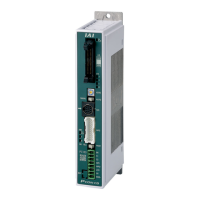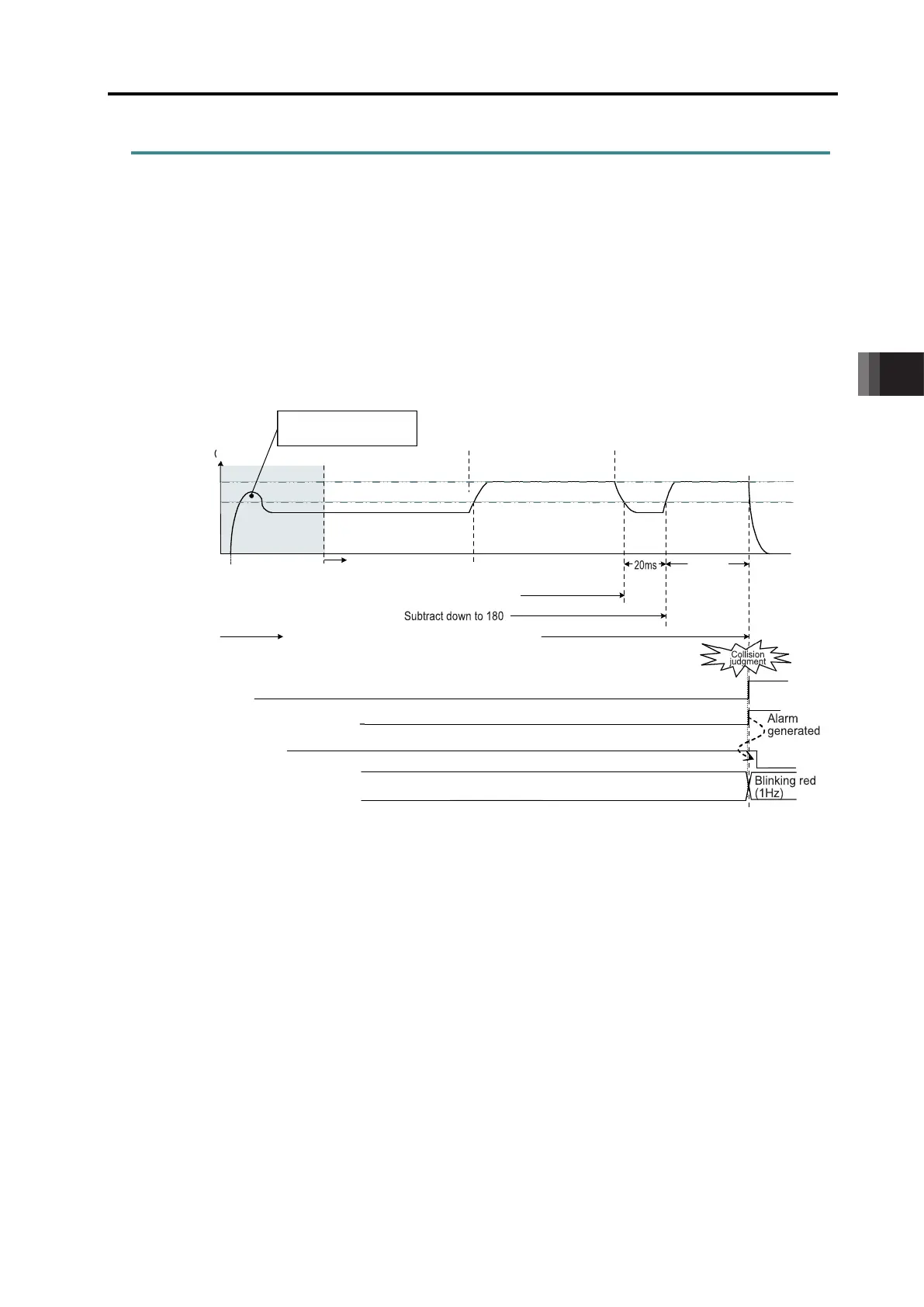5. Various Functions
5.1 Collision Detection Feature
5-1 ME0342-4B
5.1 Collision Detection Feature
This function stops the operation immediately when the actuator comes into contact with an
object.
Understand this chapter well to avoid any trouble in operation and safety.
Collision detection feature is a feature that stops the operation by generating an alarm and
turning OFF the servo when the command current exceeds the set value. The range for
detection also can be set.
Caution
● This is an auxiliary function to reduce damage to workpieces, etc. in case of unexpected
events.
● In this feature, the following modes should not be available.
• Pulse Train Control Mode (PIO Pattern 6 and PIO Pattern 7) in pulse train type)
• Semi Direct Mode in field network type
• Motion network applicable type (I/O type: ML3)
● No compensation will be offered for unexpected damages.
● This function must be set in accordance with expected collisions, therefore appropriate
values vary depending on the system. Check thoroughly before use.
5.1 Collision Detection Feature
ME0342-4B 5-2
5.1.1 Collision Detection Judgement
[Collision Judgment]
When the present position is within the position zone range and the time set in parameter No.
50 "Load output judgment time" is exceeded and the command torque value set in the position
table "Threshold" is exceeded, a collision is judged to have happened.
After judgment, the load output judgment status (LOAD) turns on and the collision detection
alarm gets generated. At this moment, if it is set to "1" or "3" in Parameter No. 168 "Collision
Detection Feature", the servo should automatically be turned off.
◎ Example of Judgment (at judgment time of 255ms)
(Note 1) When Parameter No. 168 "Collision Detection Feature" is set to "1" or "3".
Due to load fluctuation
current drops
Due to outside range
not counted
Current
limit value
when
traveling
"Threshold"
Set current
value
Position zone
Within range
(judgment start)
Time
Collision detection alarm (0DF)
Blinking green
Controller status indicator LED
(Note 1)

